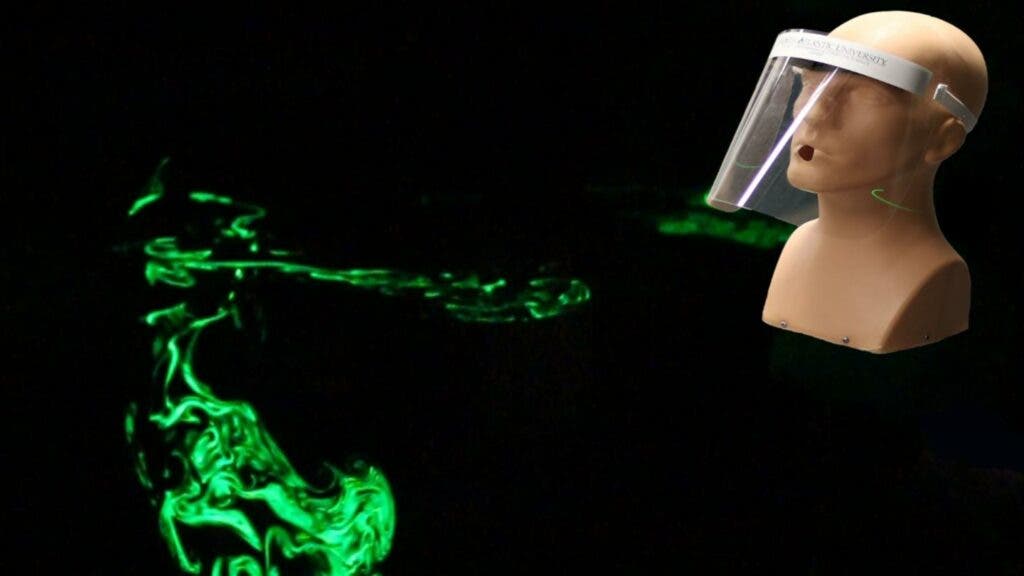
Despite a very slow reaction and contradictory initial recommendations from national healthcare systems and even the World Health Organization, the consensus now is that face masks are effective at curbing the spread of COVID-19 infections. However, not all face coverings provide adequate protection. According to a new study, face shields and face masks fitted with exhalation valves allow expelled droplets to come in contact with the wearer much easier than regular cloth or surgical masks, greatly enhancing the risk of infection.
Manhar Dhanak and Siddhartha Verna, both professors of mechanical engineering at Florida Atlantic University in the U.S., visualized jets of droplets expelled towards a hollow mannequin head fitted with either a face shield or valved face mask. Both options have become quite popular lately because people feel they’re more comfortable. However, the results of the analysis show that that comfort is traded for safety.
“Face shields and masks with exhalation valves are not effective for restricting the spread of aerosol-sized droplets. But we have seen widespread adoption of these two alternatives to regular masks. Our main motivation was to raise awareness among the general public about what exactly happens to the smallest respiratory droplets when these options are used,” Dhanak and Verna told ZME Science in an email.
The researchers employed a manual pump to simulate a cough or sneeze expelling droplets that may contain virus particles towards the mannequin head. Laser sheets measured even the smallest particles during the spatial and temporal development of the ejected flow.
“The spreading of droplets depends to a large extent on the ambient airflow. It is difficult to convey how easily very slight changes can alter the droplet dispersal patterns,” the researchers said.
The visualization showed that although face shields block the initial forward motion of the expelled jet, droplets can still move around the visor easily and come in contact with a person’s mouth, nose, and eyes. By themselves, face shields are thus ineffective compared with mouth and nose coverings.
“The main purpose of face shields, when used by healthcare workers (in conjunction with masks), is to protect them from incoming sprays and splatters. But the shields by themselves are not effective in stopping the incoming aerosol-sized droplets (approximately 5 to 10 micron and smaller),” the researchers said.
And although exhalation ports fitted on some masks improve breathing, they also allow a large number of droplets to pass through the valve unfiltered, the flow visualization showed.
Instead, people should stick to high-quality cloth or surgical masks in order to minimize the risk of infection for themselves and others in the community.
These findings may be particularly important in the context of schools re-opening, where students and staff will be exposed to the same ambient droplets and aerosols in an indoor setting. Some might feel face shields and masks fitted with exhale valves are more comfortable, but the tradeoff is not worth it, judging from these results.
Next, the researchers plan to investigate the effectiveness of plexiglass and cloth screens around cubicles at curbing the spread of COVID-19.
The findings were reported today in the journal Physics of Fluids.






